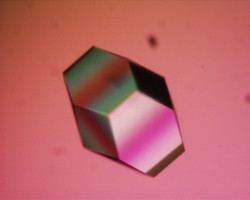
Serial Crystallography at the Synchrotron
28th Apr 2021
Serial millisecond crystallography (SMX) is a method used for determination of challenging protein structures which can be done with minimal radiation damage at room temperature which could be important for the elucidation of protein dynamics. Protein crystals are suspended in a highly viscous carrier medium and injected into the X-ray beam using high-viscosity injectors (HVI). This results in a much higher crystal hit rate, which mean a smaller amount of crystals (< 1 mg) is required to solve a crystal structure.
At the Australian Synchrotron, a facility has been implemented to enable high-throughput SMX. Here, a novel HVI, Lipidico, which utilises commercially available LCP syringes (such as those available from Art Robbins Instruments) to directly deliver microcrystals into the beamline. A new hit finding algorithm is utilised to rapidly process data collected from the detector.
The following articles clearly demonstrate the use of SMX to determine protein structures:
For more information on our products for protein crystallography, click here.
Referencing:
Berntsen, P., Sharma, R., Kusel, M., Abbey, B., Darmanin, C. Lipidico Injection Protocol for Serial Crystallography Measurements at the Australian Synchrotron. J. Vis. Exp. (163), e61650, doi:10.3791/61650 (2020). https://pubmed.ncbi.nlm.nih.gov/33044452/
The serial millisecond crystallography instrument at the Australian Synchrotron incorporating the “Lipidico” injector, Rev. Sci. Instrum. 90, 085110 (2019); https://doi.org/10.1063/1.5104298. https://aip.scitation.org/doi/10.1063/1.5104298
Image credit: https://commons.wikimedia.org/wiki/File:Lysozyme_crystal1.JPG
